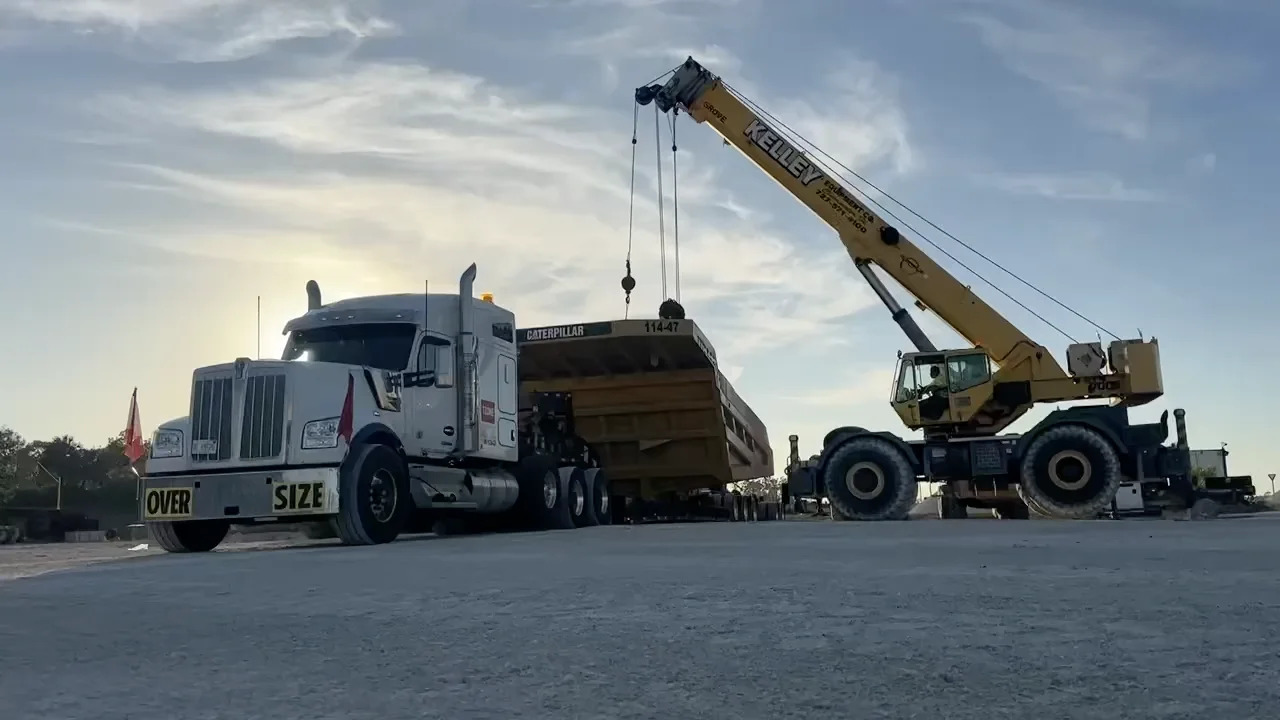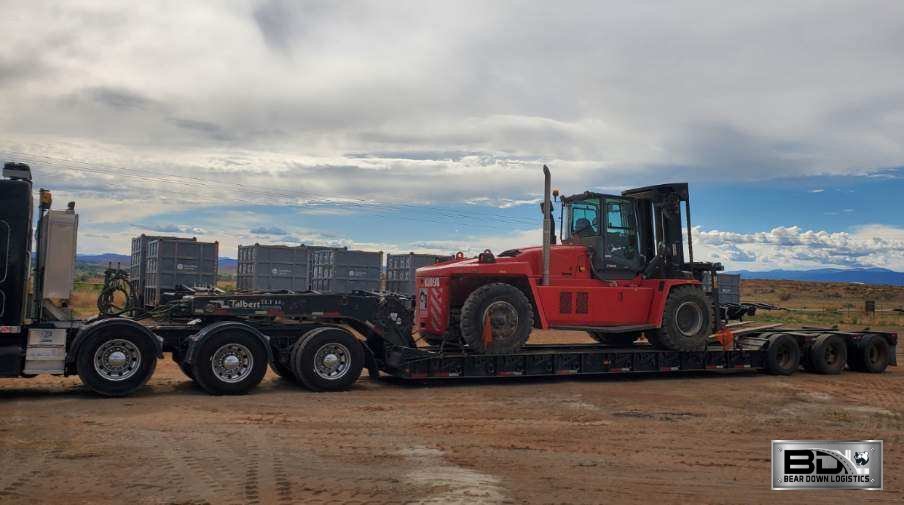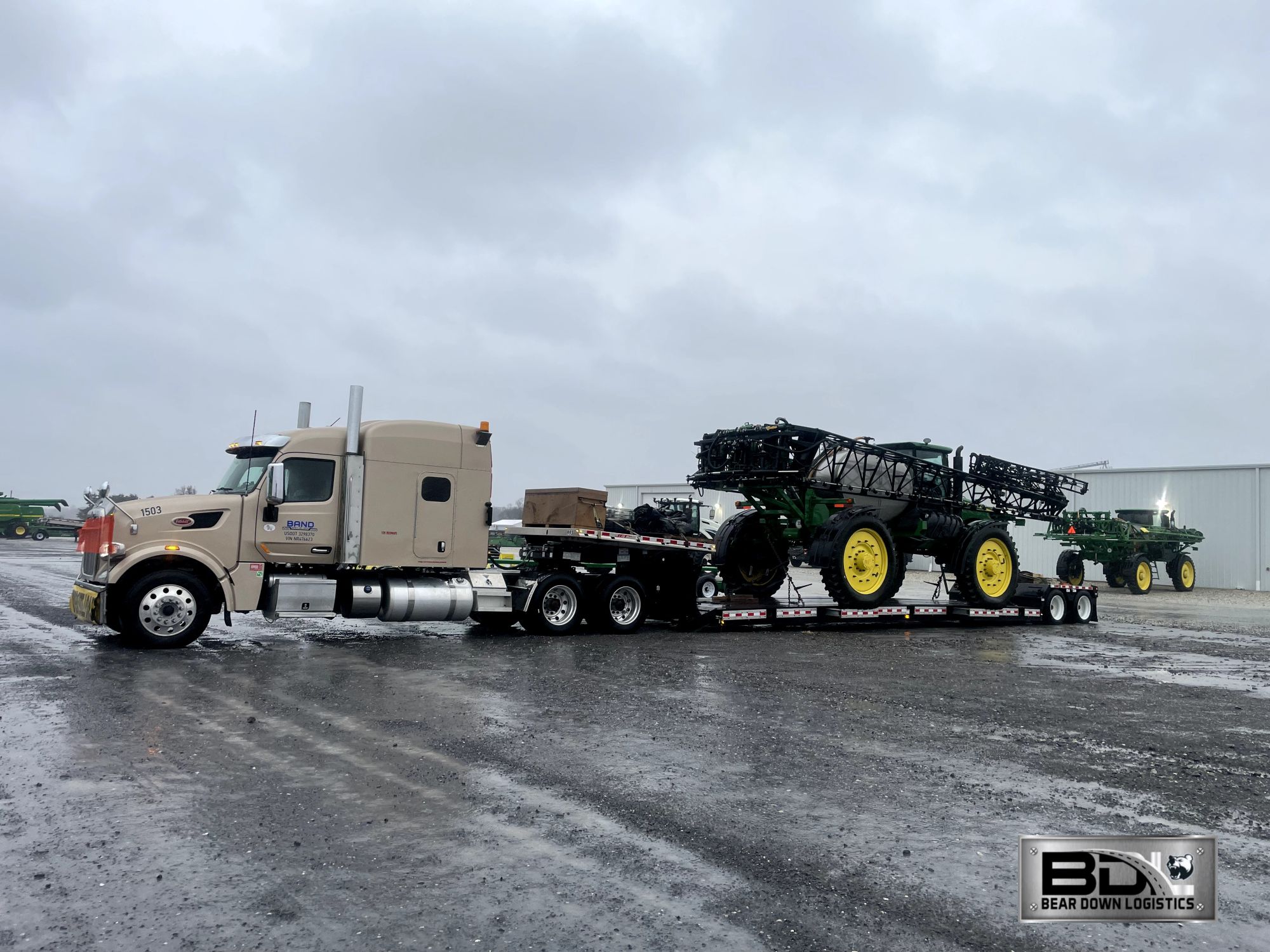Transporting large, heavy, and irregularly shaped loads that cannot be moved through standard shipping methods requires careful planning and expertise. Whether it’s industrial equipment, massive construction materials, or oversized vehicles, ensuring both safety and efficiency is essential. Oversize hauling companies such as Bear Down Logistic specialize in handling these complex tasks, utilizing a combination of technology, regulatory compliance, and experienced personnel to safeguard each load from origin to destination.
The Importance of Load Safety in Oversize Hauling
Transporting oversized cargo involves risks that go beyond those of ordinary freight. The weight, size, and shape of the load often create challenges in balance, maneuverability, and roadway clearance. Ensuring load safety protects not only the transported goods but also the drivers, support teams, and the public. Any mistake in securing or maneuvering a large shipment can lead to costly damages, project delays, or even accidents. This is why professional oversize hauling companies place safety at the center of their operations.

Regulatory Compliance and Permitting
One of the first steps in ensuring load safety is adherence to strict regulations governing oversize transport. Each state has specific guidelines related to vehicle dimensions, maximum weights, and travel restrictions. Oversize hauling companies must secure permits before moving loads, ensuring that the cargo route complies with federal, state, and local laws.
Permits often specify travel times, allowable speeds, and escort vehicle requirements. These restrictions exist to minimize risks and prevent oversized vehicles from disrupting normal traffic flow. By carefully following these rules, companies like Bear Down Logistic maintain compliance while reducing safety hazards.
Route Planning and Risk Assessment
Proper route planning is essential for oversize hauling. Not all roads can accommodate heavy or wide loads, and some may present obstacles such as low bridges, sharp curves, or weight-restricted overpasses. Hauling companies conduct thorough risk assessments before departure, often using mapping software and on-the-ground inspections to identify the safest paths. In addition to physical road features, weather and traffic conditions are considered. Rain, snow, or strong winds can make transporting oversized loads more dangerous, so schedules are adjusted to minimize exposure to hazardous conditions. A well-planned route ensures smoother transport and reduces the chance of unexpected incidents.
Load Securing Techniques
The methods used to secure an oversized load directly impact its stability throughout the journey. Straps, chains, and specialized tie-down equipment are chosen based on the cargo’s dimensions and weight. Oversize hauling companies must ensure even weight distribution to prevent the load from shifting, which could compromise balance and cause accidents. For example, heavy machinery may require custom cradles or blocking materials to immobilize moving parts. Flatbed trailers are often fitted with additional safety features, such as edge protectors and reinforced anchor points. Every securing technique is carefully checked and double-checked before the vehicle begins its trip.
Use of Specialized Equipment
Transporting oversized cargo is not possible with standard trucks and trailers. Instead, specialized equipment such as extendable flatbeds, lowboy trailers, and modular transport systems is used to handle large dimensions. These vehicles are engineered to carry massive weights while providing stability and flexibility on the road. Hydraulic systems in some trailers allow for height adjustment, which helps clear bridges or power lines. In other cases, steerable axles provide better maneuverability around tight corners. This advanced equipment ensures that the load remains secure while adapting to varying road conditions.

Escort and Pilot Vehicles
Escort or pilot vehicles play a vital role in oversize hauling safety. Positioned in front of and behind the hauling truck, these vehicles warn other drivers of the oversized load and assist in navigating difficult areas. They may block intersections, signal lane changes, or provide communication between the hauling driver and law enforcement. These support vehicles act as the first line of defense against potential road hazards, ensuring both the cargo and the public remain safe. Regulations often mandate escort vehicles depending on the load’s size, which highlights their importance in maintaining overall safety standards.
Skilled Drivers and Training
No amount of planning or equipment can replace the value of skilled drivers. Operating a truck with an oversized load requires advanced knowledge of vehicle handling, weight distribution, and defensive driving. Oversize hauling companies invest heavily in training their drivers to manage these challenges safely.
Experienced operators understand how to adjust speed on inclines, navigate sharp turns, and react to sudden traffic conditions. They also maintain constant communication with escort teams and dispatch centers, ensuring every step of the journey is coordinated. Skilled drivers remain one of the strongest safeguards against accidents in oversize hauling.
Technology in Oversize Hauling
Modern technology has revolutionized how companies ensure load safety. GPS tracking, telematics, and real-time communication tools allow dispatchers to monitor vehicles closely and respond quickly to potential issues. Load sensors track weight distribution, alerting drivers if a shift occurs during transport.
Some companies even employ advanced route simulation software, which helps predict risks and provides alternative paths in case of road closures or traffic congestion. Technology strengthens safety protocols by providing visibility and control throughout the transportation process.
Safety Protocols and Inspections
Before, during, and after every trip, comprehensive safety inspections are conducted. Pre-trip checks include verifying securing equipment, inspecting the trailer, and confirming all permits. During transit, drivers stop at scheduled intervals to recheck straps, chains, and the overall condition of the load. After delivery, a final inspection ensures no damage occurred during transport and that all equipment is intact for the next job. These safety protocols minimize risks and maintain consistent standards of operation.
Situations Where Extra Precautions Are Needed
Certain types of cargo demand additional measures. Loads with irregular shapes, extreme weights, or sensitive machinery may require customized securing systems or multiple escort vehicles. Companies also take extra steps when hauling through urban areas with heavy traffic, where precision and caution are paramount. In some cases, law enforcement assistance is required to block highways or guide vehicles through complex intersections. These collaborative efforts demonstrate how oversize hauling companies adapt to unique challenges while keeping safety the top priority.
Short Overview of Best Practices
To summarize, oversize hauling companies rely on multiple best practices to guarantee safety:
-
Compliance with federal and state transport regulations
-
Thorough route planning and risk assessment
-
Use of specialized trailers and securing equipment
-
Deployment of escort vehicles when required
These practices, combined with skilled drivers and advanced technology, create a comprehensive safety framework.

Conclusion
Oversize hauling is a specialized field that demands precision, expertise, and commitment to safety at every stage. From acquiring permits and planning routes to securing loads and deploying escort vehicles, companies like Bear Down Logistic demonstrate how professionalism and preparation protect both cargo and communities. With skilled drivers, advanced technology, and strict safety protocols, oversize hauling companies ensure that even the largest and most challenging shipments arrive safely at their destinations.
FAQs
What qualifies as an oversize load?
An oversize load is any cargo that exceeds standard legal size or weight limits set by federal and state transportation authorities. This can include wide construction materials, industrial equipment, and heavy vehicles.
Why are escort vehicles required for oversize hauling?
Escort vehicles help manage traffic, guide the truck through difficult areas, and alert other drivers about the oversized load. They significantly improve road safety during transport.
How do companies decide which trailer to use for an oversized load?
The choice depends on the cargo’s size, weight, and shape. Lowboy trailers, extendable flatbeds, and modular transport systems are commonly used, with each option offering specific advantages for stability and clearance.
What role does weather play in oversize hauling safety?
Adverse weather conditions like rain, snow, or high winds increase the risks of transporting oversized loads. Companies often adjust schedules or reroute shipments to avoid dangerous conditions.
How often are safety inspections performed during transport?
Inspections are performed before departure, at scheduled stops during the journey, and after delivery. This ensures the load remains secure and no equipment is damaged.














Comments (0)